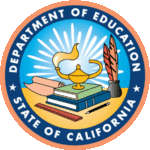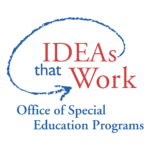This is a padlet with resources developed by the Imperial County SELPA and curated from existing resources to support and improve outcomes for English Learners with Disabilities. The padlet includes: 1. Resources developed as part of SELPA Content Leads in the California Statewide System of Support. 2. California Practitioners Guide for Educating English Learners with Disabilities and PowerPoint presentation 3. ELD Standards 4. Unpacking ELPAC Task Types and Additional ELPAC Resources 5. Accessibility Resource Graphics 6. Alternate ELPAC 7. Serving the needs of ELs with Disabilities 8. Blueprints for Effective Leadership and Instruction for our English Learners' Future (B.E.L.I.E.F.) modules.
Imperial County SELPA. 2021. Improving Outcomes for English Learners with Disabilities. Imperial County SELPA.
https://padlet.com/dmontoya18/ImprovingOutcomesELsSWD
The Imperial County SELPA has built a website full of resources dedicated to support the statewide system by offering collaborative consultation services to SELPAs who have identified needs associated with improving outcomes for English learners with Disabilities.
Imperial Special Education Local Plan Area, (2022).
This resource is intended as a goal writing tool to assist both regular and special educators to meet the needs of students who are identified as English learners (EL) and may possibly need to be identified or are currently identified for special education.
Ventura County Special Education Local Plan Area, (2019).
This document updates and supersedes the Office of Special Education and Rehabilitative Services’ (OSERS) guidance titled Questions and Answers on Discipline Procedures, issued in June 2009 and includes additional questions and answers that address topics that have arisen as the field continues to carry out the discipline provisions of IDEA and its implementing regulations. Key topics include removing a child with a disability from their current educational placement and the responsibilities of individualized education program (IEP) teams to address the behavioral needs of children with disabilities through the evaluation, reevaluation, and IEP development process to ensure the provision of a free appropriate public education (FAPE).
Office of Special Education Rehabilitative Services. 2022. Questions and Answers Addressing the Needs of Children with Disabilities and the Individuals with Disabilities Education Act's (IDEA's) Discipline Provisions
https://sites.ed.gov/idea/files/qa-addressing-the-needs-of-children-with-disabilities-and-idea-discipline-provisions.pdf (accessed September 16, 2022).
This guide emphasizes the importance of respecting and being responsive to student and family culture and language when developing programs, services, and instruction for English learners in the state who may have a disability that impacts their ability to learn.
California Department of Education. 2019. California Practitioners’ Guide for Educating English Learners with Disabilities. Sacramento, CA: California Department of Education.


